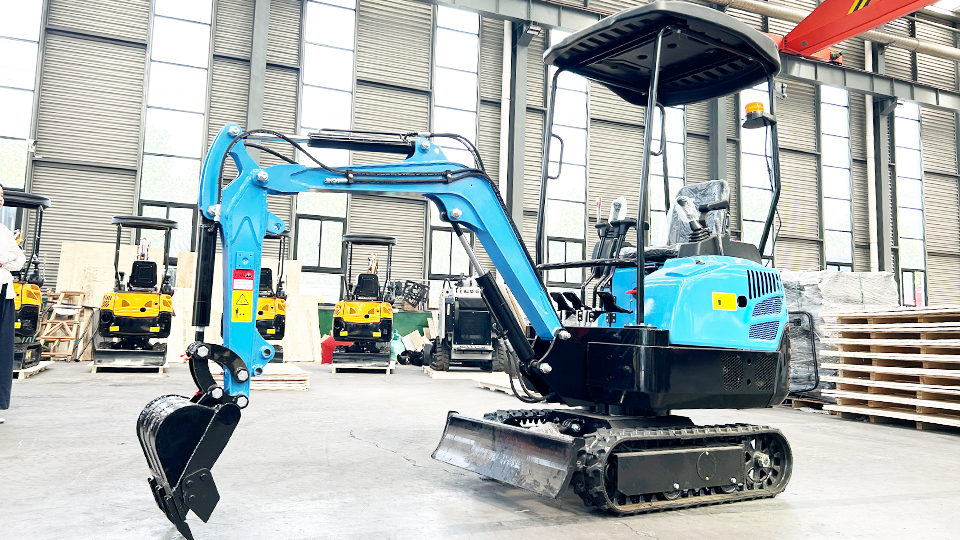Electric Excavators: The Next Big Thing in Heavy Machinery
The heavy machinery industry, traditionally dominated by diesel-powered giants, is on the cusp of a profound transformation. Just as electric vehicles (EVs) have reshaped the automotive landscape, electric excavators are rapidly emerging as a compelling and increasingly viable alternative in construction, mining, and demolition. While still a relatively nascent segment compared to their diesel counterparts, the benefits they offer—ranging from environmental sustainability to operational efficiency and cost savings—position them as not just a niche product, but potentially "The Next Big Thing" in heavy machinery.
The Driving Force: Why Electrify Excavators?
Several powerful trends are accelerating the shift towards electric excavators:
Environmental Mandates and Sustainability Goals:
Zero Emissions: The most immediate and impactful benefit. Electric excavators produce zero tailpipe emissions at the point of operation, making them ideal for indoor work (tunnels, enclosed demolition, manufacturing facilities) and sensitive urban environments where air quality is a paramount concern. This helps companies meet increasingly stringent environmental regulations and their own corporate sustainability targets.
Reduced Noise Pollution: Electric motors are significantly quieter than diesel engines. This dramatically reduces noise pollution on job sites, a major benefit for urban projects, night work, and worker well-being. Quieter machines improve communication and reduce the risk of noise-induced hearing loss.
Operational Efficiency and Productivity:
Instant Torque: Electric motors deliver maximum torque from zero RPM, providing powerful and immediate digging and lifting forces. This can translate to faster cycle times and enhanced productivity in certain applications.
Reduced Maintenance: With fewer moving parts (no engine, transmission, fuel filters, oil changes, spark plugs, etc.), electric excavators require significantly less maintenance. This leads to reduced downtime, lower labor costs for servicing, and fewer replacement parts.
Consistent Performance: Electric power offers consistent performance regardless of elevation or air density, unlike diesel engines which can lose power at high altitudes.
Cost of Ownership (TCO) Advantages:
Lower Fuel Costs: Electricity is generally cheaper per equivalent unit of energy than diesel fuel. While initial purchase costs may be higher, the long-term savings in "fuel" expenses can be substantial, especially as diesel prices fluctuate and tend to rise.

Reduced Maintenance Costs: As noted, fewer moving parts mean fewer scheduled services and fewer unexpected repairs, significantly lowering the total cost of ownership over the machine's lifespan.
Government Incentives: Many governments are offering grants, tax credits, and other incentives to encourage the adoption of electric heavy equipment, further reducing the effective purchase price.
Technological Maturity and Battery Advancements:
Lithium-ion Batteries: The rapid evolution of lithium-ion battery technology, driven largely by the automotive sector, is directly benefiting heavy machinery. These batteries offer higher energy density (longer runtimes), faster charging capabilities, longer lifespans, and better performance in varying temperatures compared to older battery chemistologies.
Modular Battery Systems: Many manufacturers are developing modular battery packs that can be swapped out quickly, allowing for continuous operation on multi-shift projects without long charging downtimes.
Charging Infrastructure: While still developing, charging solutions are becoming more robust, with fast-charging options and portable battery banks supporting on-site operations.
Current Landscape and Key Players
Leading heavy equipment manufacturers are heavily investing in electric excavator development. Companies like Volvo CE, Caterpillar, Komatsu, Hitachi, and John Deere have all introduced or are actively testing electric excavator models, ranging from compact mini-excavators to larger production machines.
Compact Electric Excavators: These are currently the most common electric excavators on the market. Their smaller battery requirements make electrification more straightforward, and their typical use in urban or indoor settings makes the zero-emission, low-noise benefits particularly attractive.
Larger Electric Excavators: While more challenging due to the immense power demands and battery size requirements, prototypes and limited production runs of larger electric excavators are demonstrating their capability for heavy-duty tasks, often incorporating advanced energy management systems and high-capacity battery packs.
Challenges and Overcoming Them
Despite the significant advantages, the widespread adoption of electric excavators faces a few hurdles:
Initial Purchase Price: Electric excavators generally have a higher upfront cost than equivalent diesel models, primarily due to the expense of the battery pack. However, as battery technology scales and production increases, these costs are expected to decrease.
Charging Infrastructure: Reliable and robust charging infrastructure on job sites is crucial. This includes access to sufficient grid power, appropriate chargers, and potentially smart energy management systems to handle high power demands.
Battery Runtime and Charging Time: For continuous, demanding operations, ensuring sufficient battery runtime and fast charging capabilities is critical. Solutions like battery swapping, opportunity charging during breaks, and ultra-fast chargers are being developed to address this.
Performance in Extreme Conditions: While advancements are made, extreme cold or heat can still impact battery performance and charging efficiency. Manufacturers are continuously working on thermal management systems to mitigate these effects.

Weight and Balance: Batteries add significant weight to the machine, which needs to be carefully managed in the design to maintain stability and performance without sacrificing payload capacity or maneuverability.
The Future is Bright (and Electric)
The trajectory for electric excavators is unequivocally upward. As battery technology continues to improve, charging infrastructure becomes more ubiquitous, and regulatory pressures for cleaner construction grow, electric excavators will move from being an innovative alternative to a mainstream solution.
They represent a paradigm shift, not just in how machines are powered, but in how construction sites operate. Quieter, cleaner, and ultimately more efficient, electric excavators are poised to become a defining feature of the next generation of heavy machinery, offering a sustainable and economically compelling path forward for the global construction industry. It's not a question of if they become the next big thing, but how quickly.
Post time:Sep-25-2020
